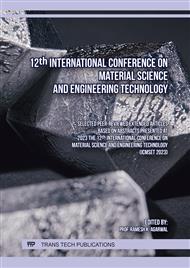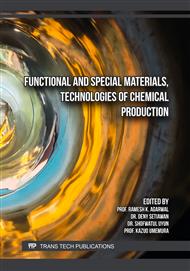p.65
p.77
p.85
p.93
p.99
p.105
p.111
p.121
p.127
Analyzing the Sound of Materials: Application of Acoustic Emission Technique for Monitoring Material Behavior
Abstract:
During the last years, some concerns have arisen in relation to the outcome of mechanisms of failure in composite materials according to its mechanical behavior. Such interest resulted in the development of new complex structures in order to enhance its mechanical resistance and the controlling of damage processes. Nevertheless, it is imperative to understand the degree of mechanical performance that these materials can achieve when under external stresses. In this regard, applying Acoustic Emission (AE) technique is widely known as a very effective technology for identifying and monitoring damage progression on different kind of materials and structures providing valuable information. AE is a non-destructive technique (NDT) capable of detecting micro damage initiation and propagation along several types of failure modes such as reinforcement/matrix interfacial debonding, matrix cracking, delamination, fracture, etc. This paper examines applications of AE regarding to composite materials where fracture processes are generally more complex and data interpretation is correspondingly more difficult. Finally, in order to continuously improve the reliability of this technique, several researches have advanced its trustworthiness through innovations in AE technology. Some perspectives are discussed.
Info:
Periodical:
Pages:
111-117
Citation:
Online since:
March 2024
Price:
Сopyright:
© 2024 Trans Tech Publications Ltd. All Rights Reserved
Share:
Citation:



